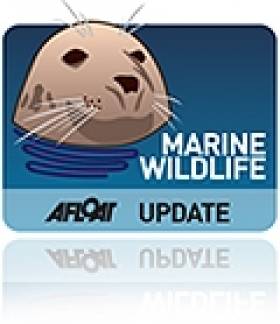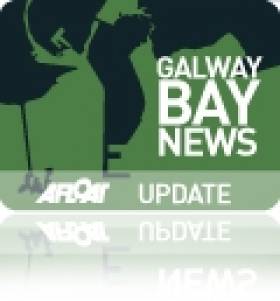Displaying items by tag: Grattan Beach
The success of the “living lab” at Galway’s Grattan beach is the focus of a workshop in Salthill this evening (Tues Feb 27).
As Afloat previously reported, the project to install sand fences at Grattan Beach was piloted last year as a nature-based solution to the management of the beach and sand dunes.
The project involves Galway City Council, along with the University of Galway and the Atlantic Seaboard North Climate Action Regional Office (CARO).
The workshop aims to “ engage and inform members of the public” to learn more about the success of the project.
It will relay some of the principles of dune health and cover biodiversity and mitigation methods via nature-based solutions, the organisers say.
 Grattan Beach sand fencing project 2023
Grattan Beach sand fencing project 2023
It will look ahead to 2024, and use a variety of “games” to enable the participants to have a conversation about the future of Grattan beach, they say
Climate change impacts, and how to get involved in protecting and supporting biodiversity through practical engagement will also be discussed.
The organisers say there are a “host of opportunities available through community events”, such as “Sand Dune Day”, the Clean Coast beach cleaners and the “Explore your shore” monitoring through the National Biodiversity Data Centre.
“As we are also asking members to imagine the future of Grattan, we hope to have some imaginative ideas for Grattan in 2050,” the organisers state.
The workshop takes place in the Galway Business School, An Halla Mór, Salthill, Galway this evening, February 27th, from 7.30 pm to 9 pm.
'Beach Safari' At Salthill Ahead Of Galway Sea Festival
#MarineWildlife - Young and old alike are invited to join a 'beach safari' from the lifeguard hut Grattan Beach in Salthill at 11.30am on Sunday 26 May, ahead of the first Galway Sea Festival.
Marine wildlife experts such as Amy Lusher of GMIT's Marine and Freshwater Research Centre and Dr Nóirín Burke of the Galway Atlantaquaria will be on hand to provide insights into an often ignored world of plants and animals, as the Galway Independent reports.
“The shore can sometimes appear to be devoid of wildlife, but when you start to look closely, there is a wonderful amount of activity going on - in the sand, under the rocks and in the rock pools," said Dr Burke.
“Grattan Beach is such an amazing resource to have on our doorstep here in Galway. Just a few hundred metres from the footpath where people walk and jog you can enter a habitat where life is completely different from our own."
A further chance to discover more about this secret world of the marine habitat will be available at the Galway Atlantaquaria's 'Family Funday' on 2 June in conjunction with the city's Galway Sea Festival celebrations.
As previously reported on Afloat.ie, "tens of thousands" of visitors are expected to flock to the City of the Tribes for the first Galway Sea Festival from 31 May till 3 June over the June bank holiday weekend.
Galway Beach Gets Clean Bill of Health for Ironman Triathlon
#GALWAY BAY - Galway City Council lifted the swimming ban on Salthill at the weekend, clearing the way for the upcoming Ironman 70.3 triathlon in the City of the Tribes.
As previously reported on Afloat.ie, concerns had been raised about the Galway beach closure last week resulting from elevated levels of E.coli above the EU's mandatory safety theshold.
But subsequent testing showed that levels had returned to below the safe limit, and Galway Bay FM reports that a second test confirmed that E.coli presence was "well below" permitted values.
Despite the bathing ban on Grattan Beach, triathlon organisers were confident that the event would "not be impacted".
According to the Galway Advertiser, some 2,500 particpants are registered to compete in the Ironman 70.3 triathlon this Sunday 2 September.
The second annual race comprises a 1.9km swim along the Salthill Promenade, a 90km cycle through Connemara and a 21.1km run through the streets of Salthill and The Claddagh.
As many as 25,000 visitors are expected in what marks another tourism boost for Galway, following on the heels of the Volvo Ocean Race finale last month.






























































